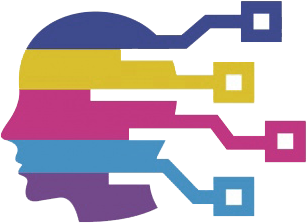The recent buzz surrounding DeepSeek’s R1 chatbot highlights a critical misconception within the tech industry: that groundbreaking progress necessarily involves creating more massive, resource-hungry models. While the media and investors swooped in to applaud DeepSeek’s apparent breakthrough—claiming it matched top-tier AI giants on a budget—the underlying technological narrative is far more nuanced. This incident exemplifies a larger tendency to view efficiency and innovation as opposites, ignoring the unsung hero of modern AI: knowledge distillation. Rather than relying solely on brute force, human ingenuity continues to refine and optimize models in ways that can outpace traditional scaling strategies.
The narrative spun by the hype machines often obscures the fact that many of these “revolutions” are rooted in techniques that have been around for years. It’s tempting to get caught up in the thrill of new numbers, new models, and headlines that promise better performance for less, but the real story lies in the subtle refinement of algorithms. DeepSeek’s use of distillation was portrayed as a clandestine or revolutionary workaround, but in truth, it is an established, highly effective tool in the AI scientist’s arsenal. Recognizing this reveals that true progress isn’t always about bigger models—it can be about smarter models.
Understanding Knowledge Distillation: The Unsung Hero of AI
Knowledge distillation is a concept that, despite its importance, remains largely underappreciated outside specialist circles. It functions by transferring knowledge from a large, complex “teacher” model to a smaller, faster “student” model, without sacrificing significant accuracy. The process involves feeding the student soft targets—probabilistic outputs that encode nuanced information about the teacher’s predictions—allowing it to learn not just the final answers, but the confidence and relationships underlying those answers.
This technique, first formulated in 2015 by Google researchers and notably associated with Geoffrey Hinton’s pioneering work, is nothing short of revolutionary in making AI accessible, affordable, and scalable. The conventional narrative of AI progress—largely driven by increasing data and computational power—is being challenged by this more elegant paradigm. Instead of relentlessly scaling up models, researchers now focus on how to make models smarter with less.
The core strength of distillation lies in its ability to encapsulate the “dark knowledge” that large models possess—a term that poetically captures the wealth of implicit information encoded within these models. It allows smaller models to mimic the decision boundaries and subtleties of their larger counterparts, enabling deployment in real-world scenarios where computational resources are limited.
The Critical Role of Distillation in Contemporary AI
Despite its longstanding presence, the industry’s embrace of distillation has accelerated significantly in recent years, driven by the insatiable demand for more capable yet efficient AI. Google’s DistilBERT and similar models exemplify how this process has transitioned from niche research to mainstream application. Organizations now routinely use distillation to produce leaner versions of vast language models, reducing costs and latency without substantial performance trade-offs.
What sets this technique apart from other efficiency-driven approaches is its foundation in deep understanding rather than brute strength. It’s not merely about trimming models; it’s about teaching them to think more like their larger versions. This subtly shifts the paradigm from “building bigger” to “building better.” The fact that top industry players like Google, OpenAI, and Amazon have integrated distillation into their workflows speaks volumes about its effectiveness.
In the context of DeepSeek’s claims, the controversy over whether they “hacked” the system or simply employed a well-known technique misses the point. Distillation isn’t a secret weapon—it’s an established process with clear scientific foundations. The real breakthrough is in how creatively and efficiently this technique is being applied to democratize AI, making powerful models more accessible.
Implications for the Future of AI Development
The broader implication of distillation’s rising prominence is that the future of AI doesn’t necessarily depend on outscaling competitors at an exponential rate. Instead, it hinges on smarter engineering methods—approaches that optimize the use of existing knowledge and resources. This insight has profound consequences for democratizing AI, reducing environmental impact, and fostering innovation among smaller players.
Open source initiatives, like UC Berkeley’s Sky-T1 project, showcase how distillation can produce high-quality, low-cost models capable of complex reasoning. The fact that such models can be trained for less than $500—and still match or surpass larger models—demonstrates that breakthroughs are accessible, not exclusive to mega-corporations with unlimited resources.
Moreover, if the industry embraces the strategic use of distillation, it can shift focus from simply discovering bigger models to refining and understanding smaller, efficient ones. This transition could catalyze a new era where AI is not only more powerful but also more sustainable, ethical, and inclusive. As one of the key techniques behind next-generation models, distillation holds the promise to fundamentally reshape what “AI progress” truly means.
The narrative of AI innovation is shifting. The true power lies not in the raw scale of models but in the elegance of their design and the intelligence behind their training. Knowledge distillation exemplifies this shift—showing that sometimes, the most potent advancements come from rethinking and refining what already exists.

